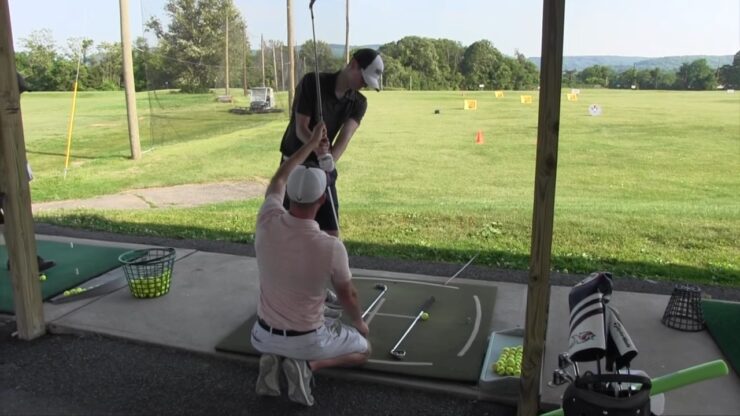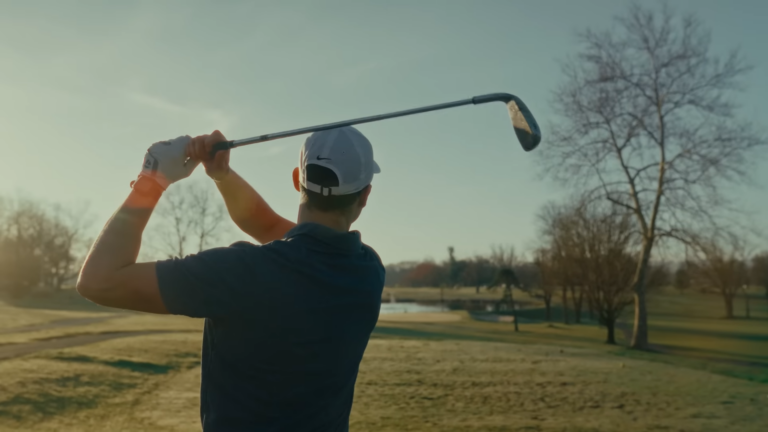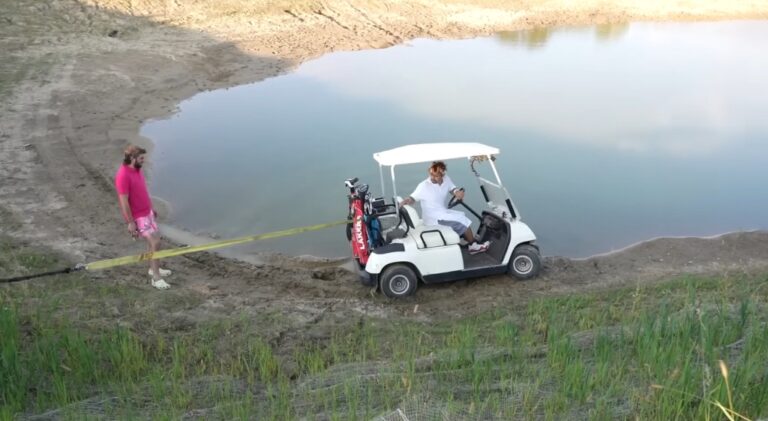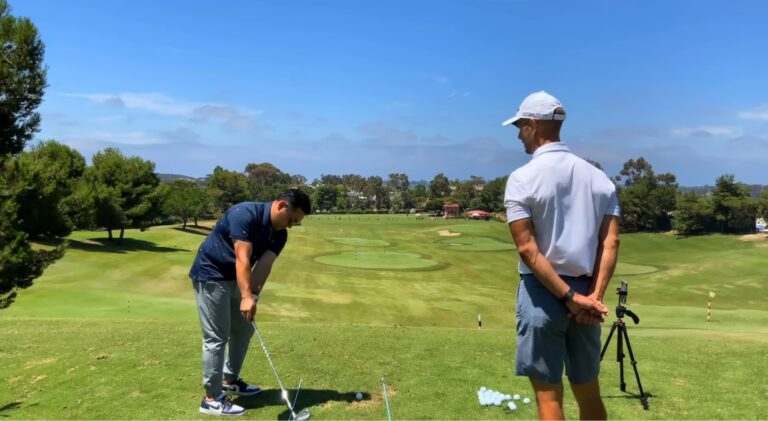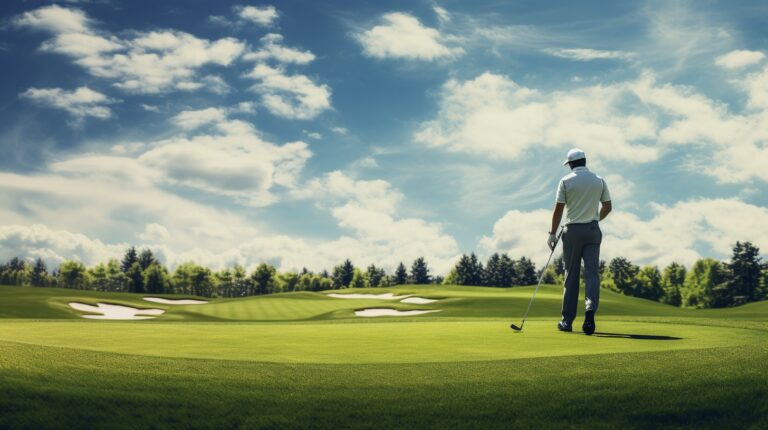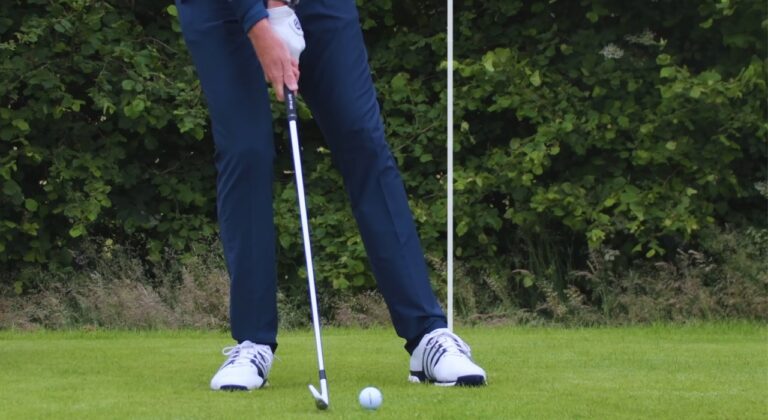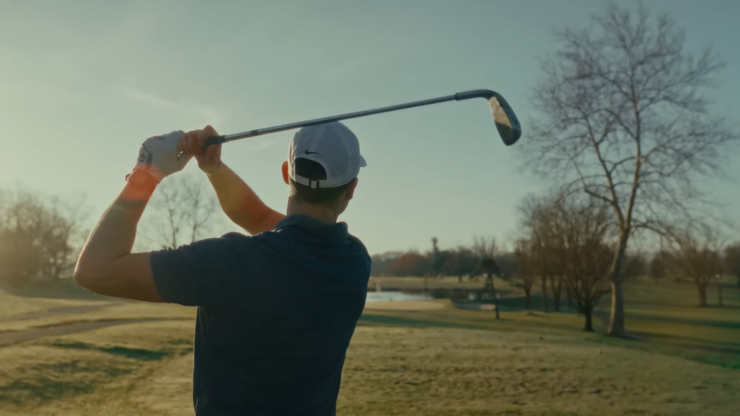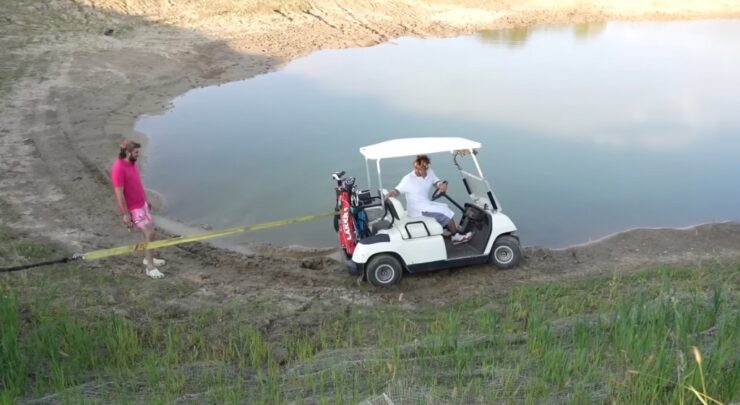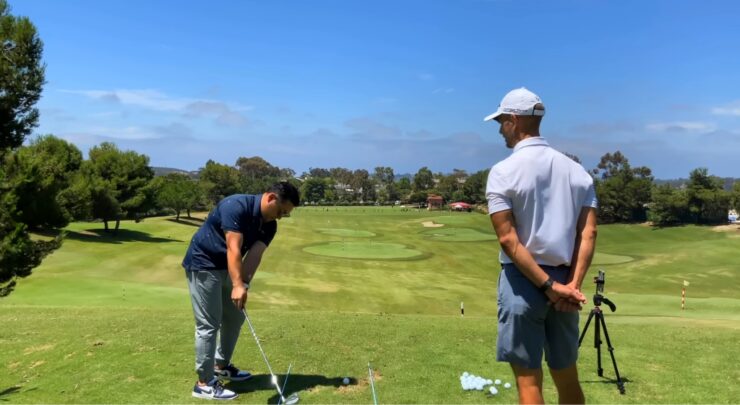During one of my early golf lessons, I was paired with an elderly gentleman named Mr. Thompson. As we approached the 7th hole, a challenging par 3, I confidently selected my club, ready to impress.
To my dismay, my shot barely cleared the water, landing in the bunker. Mr. Thompson, with a knowing smile, took his shot, which effortlessly landed a few feet from the pin. As we walked towards the green, he shared his secret: understanding the Angle of Attack.
He explained that this often-overlooked aspect of the swing had the power to shape every shot’s destiny. Intrigued, I embarked on a journey to delve into the nuances of AoA, discovering its pivotal role in golf.
Whether it’s a steep, shallow, or neutral approach, the AoA can be the bridge between an average shot and a great one.
That’s why i want to share the wisdom passed down from Mr. Thompson, exploring the importance of the Angle of Attack and offering insights that have elevated my game.
What is Angle of Attack?
Golf is a sport where the minutest of details can make a significant difference. One such detail is the Angle of Attack. Before diving into the intricacies, let’s understand the basics. The Angle of Attack refers to the angle at which the clubhead approaches the ball during a swing.
It can either be steep, shallow, or neutral. The AoA plays a pivotal role in determining the ball’s trajectory, spin, and distance.
- Steep Angle of Attack: When the clubhead approaches the ball from a higher angle.
- Shallow Angle of Attack: When the clubhead approaches the ball from a flatter angle.
- Neutral Angle of Attack: When the clubhead approaches the ball straight on.
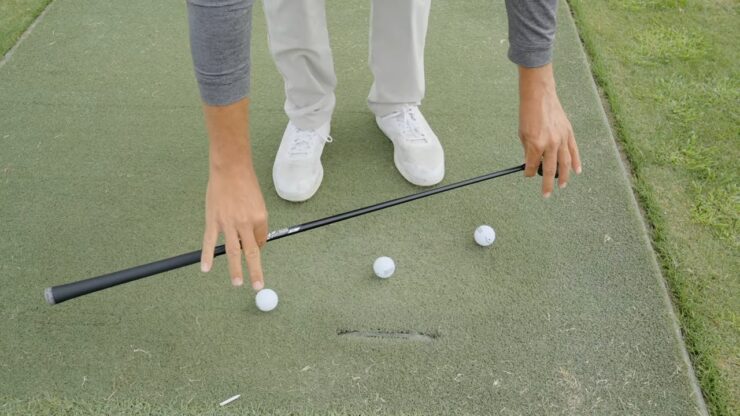
Why is it Important?
The AoA is crucial because it directly affects the quality of the shot. A steep AoA can lead to shots that are short and have a higher trajectory, while a shallow angle can result in longer shots with a lower trajectory. Moreover, the AoA can influence the spin rate of the ball, which can affect its behavior once it lands on the green.
- Spin Rate: A steeper shot generally imparts more backspin, while a shallower one can lead to reduced spin or even sidespin.
- Trajectory Control: Mastering this one allows you to control the ball’s flight, essential for overcoming challenges like wind or obstacles on the course.
Factors Influencing Angle of Attack
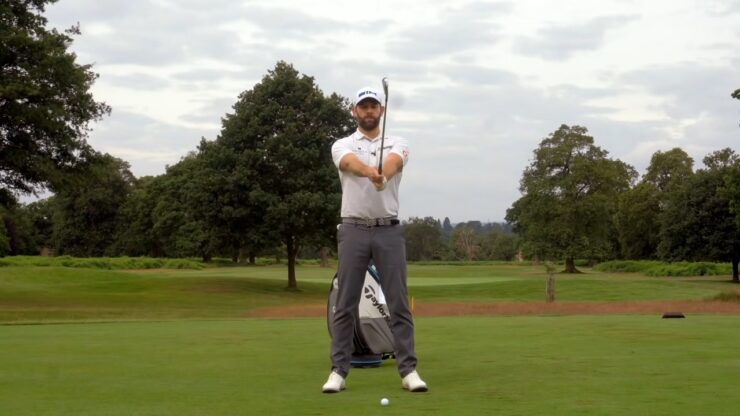
Every golfer’s swing is unique, and several factors can influence the AoA. Recognizing these can help in making necessary adjustments.
Club Selection
Different clubs are designed for various purposes, and their structure can influence the AoA. For instance, drivers are meant for distance and usually promote a shallower AoA, while wedges are designed for loft and can encourage a steeper AoA.
- Drivers: These are designed with a larger clubhead and longer shaft, promoting a flatter one for maximum distance.
- Irons: These have a more angled face, which can lead to a steeper AoA, especially in the shorter irons.
- Wedges: With their high loft, wedges often result in the steepest AoA, which is why they can produce shots with high trajectories and spin.
Swing Path
The path your club takes during the swing can significantly influence the angle of attack. A golfer who swings from outside to inside (a common mistake) will likely have a steeper AoA, while someone who swings from inside to outside might have a shallower AoA.
Outside to Inside swing path can lead to a slice, where the ball curves from left to right (for a right-handed golfer). On the other side, Inside to Outside can result in a hook, where the ball curves from right to left (for a right-handed golfer).
Tips to Improve
Improving your AoA can lead to better ball striking, increased distance, and more control over your shots. Here are some tips to help you optimize this move to make it fit you better.
Practice with a Purpose
Merely hitting balls at the range won’t help unless you’re practicing with a clear intention. Focus on your swing path and try to achieve a consistent AoA with each club in your bag. Devices like swing trainers or launch monitors can provide instant feedback on your AoA.
There are several drills, like the tee drill or the towel drill, that can help you achieve a desired AoA.
Adjust Your Setup
Your stance, ball position, and grip can all influence your AoA. By making slight adjustments to your setup, you can promote a shallower or steeper AoA as needed.
- Ball Position: For a shallower AoA, position the ball slightly forward in your stance. For a steeper AoA, move it back.
- Stance: A wider stance can promote a shallower angle of attack, while a narrower stance can lead to a steeper AoA.
Common Mistakes and Their Impact
Understanding common mistakes related to AoA can help golfers identify areas of improvement. Let’s explore some frequent errors and their implications. Many golfers, in an attempt to correct their shot, end up choosing the wrong club for the shot.
This can lead to inconsistent results and a lack of confidence in club selection. Some golfers use a driver to achieve a shallower AoA, even when it’s not the best choice for the distance. While wedges can help achieve a steeper angle of attack, using them unnecessarily can compromise distance.
Furthermore, weight transfer during the swing plays a crucial role in determining AoA. Incorrect weight transfer can lead to inconsistent strikes and poor ball flight. Failing to transfer weight to the front foot can result in a too shallow angle of attack.
Also, transferring too much weight forward can lead to a steep AoA, causing topped shots or divots.
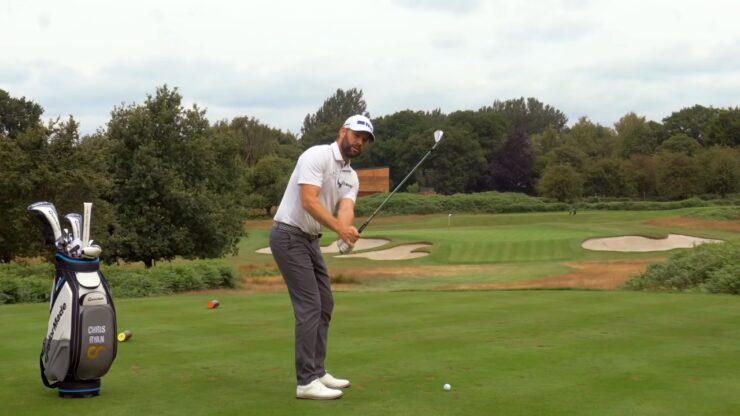
Advanced Techniques to Optimize
For those looking to take their game to the next level, mastering advanced techniques can provide the edge needed to achieve an optimal AoA consistently.
Ground Forces
The way a golfer interacts with the ground during the swing can influence AoA. By leveraging ground forces, one can generate more power and control the club’s path more effectively.
- Vertical Force: Pushing off the ground can help generate power and promote a shallower AoA.
- Rotational Force: Twisting or rotating during the swing can help control the club’s path and influence AoA.
Incorporating Biomechanics
Biomechanics of the golf swing can provide insights into how different body movements influence AoA. By optimizing body mechanics, golfers can achieve a more consistent and efficient swing. Maintaining a consistent spine angle throughout the swing can help control AoA.
Proper hip rotation can influence the swing path and, consequently, the AoA.
FAQs
What are some other essential moves in golf?
Other vital moves in golf include the takeaway, backswing, downswing, follow-through, and the finish.
What is the role of the clubface in relation to the AoA?
The clubface’s position at impact, combined with it, determines the ball’s launch direction and spin. A square clubface with the correct one can produce straight shots.
How does the grip affect the Angle of Attack?
The grip can influence the clubface’s orientation and the swing path, which in turn can affect the AoA. A strong grip might promote an upward one, while a weak grip might lead to a more downward AoA.
Is It the same for all golfers?
No, the ideal AoA can vary based on the golfer’s skill level, physical attributes, and the type of shot they’re trying to achieve.
Can the Angle of Attack affect shot accuracy?
Yes, an inconsistent one can lead to mishits like fat or thin shots, affecting both distance and direction.
Closing Thoughts
As I look back on my golfing journey, it’s evident that understanding and mastering my Angle of Attack was a turning point. It’s more than just a technical aspect of the swing; it’s a fundamental principle that can elevate your game to new heights.
Whether you’re a weekend golfer or aspire to play on the pro circuit, refining your AoA can be your secret weapon. Golf is a beautiful blend of skill, strategy, and mental fortitude.
By equipping yourself with the knowledge of AoA and practicing with purpose, you’re not just improving your swing—you’re embracing the heart and soul of the game.

